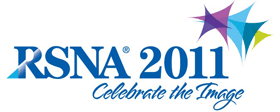
Abstract Archives of the RSNA, 2011
SSA14-05
To Provide a Noninvasive Quantitative Means of Evaluating Achilles Tendon T2 Values Using 3 T MR UTE Techniques in Asymptomatic Volunteers: Quantitative MRI Characterization of the Achilles Tendon—T2 Measurements Using Ultrashort Echo Time (UTE) MR
Scientific Formal (Paper) Presentations
Presented on November 27, 2011
Presented as part of SSA14: Musculoskeletal (Quantitative Imaging and Cartilage)
Eric Y. Chang MD, Presenter: Nothing to Disclose
Won C Bae PhD, Abstract Co-Author: Nothing to Disclose
Reni Biswas, Abstract Co-Author: Nothing to Disclose
Patrick Omoumi MD, Abstract Co-Author: Nothing to Disclose
Jiang Du, Abstract Co-Author: Grant, General Electric Company
Research collaboration, General Electric Company
Christine B. Chung MD, Abstract Co-Author: Nothing to Disclose
Sheronda Statum, Abstract Co-Author: Nothing to Disclose
Fabiano Nassar Cardoso MD, Abstract Co-Author: Nothing to Disclose
Eric Diaz BS, Abstract Co-Author: Nothing to Disclose
Jing Tzyh Alan Chiang MD, Abstract Co-Author: Nothing to Disclose
To provide a non-invasive quantitative means of evaluating Achilles tendon T2* values using 3T MR UTE techniques in asymptomatic volunteers.
Left ankles of 10 asymptomatic volunteers (43±14.2 yrs, mean±sd) underwent MR imaging at 3T. Measurements were taken from 1.5 to 6 cm above the posterior superior margin of the calcaneus in the region of the mid-tensile tendon. A constant TR–variable TE 2D ultrashort TE (UTE) sequence with a minimum TE of 8 us was employed to image and quantify the Achilles tendon of asymptomatic volunteers. Typical imaging parameters included: field of view (FOV)=10 cm, slice thickness = 2 mm, readout = 512, 355 projections, TR = 200 ms, number of excitation=2, bandwidth=±62.5 kHz, flip angle=45°, scan time=2.4 min (x4 scans total). T2* was quantified using Matlab, employing voxel-wise mono exponential fitting of fat saturated axial UTE images taken at 4 TEs (8 us, 600 us, 2.2 ms, 6.6 ms). For each sample, the region of interest was placed on the entire tendon. Additionally, topographic color maps were created to explore spatial variation of T2* values.
The quantitative UTE T2* technique, adopted from our previous cadaveric studies and applied to human subjects, provided high quality images for accurate curve fitting as well as T2* mapping. The average T2* values from the 10 tendons was 0.79±0.28 ms. (In our past cadaveric study, T2* values of 2.2±0.28 ms were found). Effect of age was insignificant (ANOVA p=0.2) for healthy volunteers.
The constant TR–variable TE UTE MR sequence offers a non-invasive means of quantitative evaluation of tendon tissue in clinically acceptable scan times. Lower T2* values in asymptomatic volunteers compared to cadaveric specimens (previous work) may reflect alterations in tissue characteristics due to freeze thaw cycles, or other post-mortem changes.
UTE MRI of Achilles tendon has applications for the diagnosis and quantitative evaluation of early tendon degeneration and the assessment of tendon repair.
Chang, E,
Bae, W,
Biswas, R,
Omoumi, P,
Du, J,
Chung, C,
Statum, S,
Cardoso, F,
Diaz, E,
Chiang, J,
To Provide a Noninvasive Quantitative Means of Evaluating Achilles Tendon T2 Values Using 3 T MR UTE Techniques in Asymptomatic Volunteers: Quantitative MRI Characterization of the Achilles Tendon—T2 Measurements Using Ultrashort Echo Time (UTE) MR. Radiological Society of North America 2011 Scientific Assembly and Annual Meeting, November 26 - December 2, 2011 ,Chicago IL.
http://archive.rsna.org/2011/11008393.html

